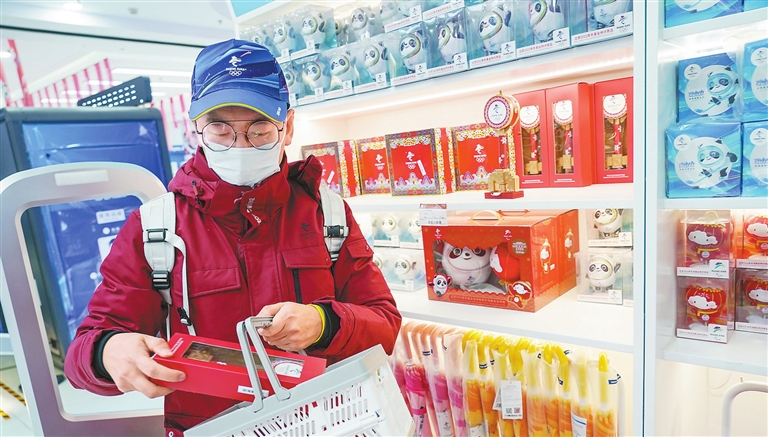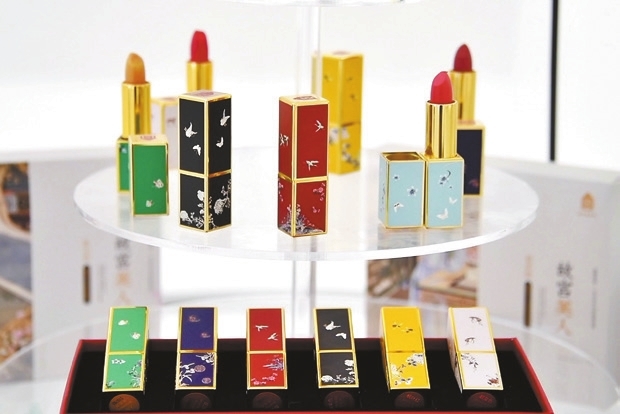

WANG JUNWEN thought he could easily snap up a fuzzy Winter Olympics mascot toy at a recent online pre-sale, but all the products were sold out in seconds. “I thought those mascots wouldn’t be popular for very long, since the Winter Olympics had been over for about a month. Eventually, I had to queue for more than an hour and got one toy at a brick-and-mortar shop,” said the young man, who boasts that he is a fan of Guochao — a consumer trend translated as “China-chic” that has swept through the nation’s younger generations recently. Experts believe that the younger generations’ confidence in Chinese culture and their national identity is reflected in the popularity of the Winter Olympics mascots, as well as the booming sales of cultural products related to the Forbidden City, an imperial palace of the Ming (1368-1644) and Qing (1644-1911) dynasties. Guochao craze Zhang Zhe, born in 1999, has bought many Chinese-brand cosmetic products or those featuring Chinese designs. “I like those designs with Chinese elements,” said Zhang. “Besides, they are as good as the overseas brands in quality. Now there are more and more Chinese makeup brands in my cosmetics collection.” According to a report published by Chinese internet giant Baidu last year, the amount of consumer attention received by Guochao has increased by 528% in the past decade. Bloomage Biotechnology Corporation Limited, a major hyaluronic acid producer in East China’s Shandong Province, is a beneficiary of the Guochao trend. Its products, including the Forbidden City-themed lipsticks and self-developed skincare products, have won many young women consumers in China. Aside from the cultural and creative products, a growing number of domestic companies have grasped the business opportunity brought by Guochao to win a bigger market share and more customers. China’s sportswear market was long dominated by foreign brands, such as Adidas and Nike, but this situation has now changed. Innovative designs with traditional Chinese cultural elements and high-quality products — domestic brands including Anta and Li-Ning —have gradually won the favor of young consumers and occupied a greater market share. Figures released by Anta Sports show that its revenue in 2021 hit 49.3 billion yuan (US$7.7 billion), a 38.9% year-on-year increase. According to Euromonitor, a global market-research company, Anta Sports held a 16.2% market share in China’s sports-shoe and apparel sector in 2021, surpassing Adidas at 14.8% and edging closer to market leader Nike at 25.2%. Stronger consumption capacity Data from the National Bureau of Statistics shows that the size of China’s Gen Z (people born from 1995 to 2009) reached about 260 million in 2020, and its expenditure was around 4 trillion yuan, accounting for 13% of the total household expenditure in China. The group is expected to become the main driving force that shapes the future of China’s economy. “The driving force of consumption is gradually shifting from the middle class to Gen Z,” said Lai Yang, an expert with the China General Chamber of Commerce. Wang Gao, a professor at the China Europe International Business School, said that members of China’s Gen Z pay more attention to their personalized needs and have strong purchasing capacity. “Chinese companies truly respect the unique demands of Gen Z and cater to their needs, so they can win Gen Z’s hearts,” said Wang. “Guochao has become a new driving force of economic growth and will facilitate industry upgrading,” said Hu Yu, from the Institute for Culture Creativity, Tsinghua University. (Xinhua) | 
